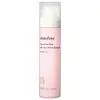What's inside
What's inside
 Key Ingredients
Key Ingredients

 Benefits
Benefits

 Concerns
Concerns

 Ingredients Side-by-side
Ingredients Side-by-side

Camellia Sinensis Leaf Water
MaskingButylene Glycol
HumectantGlycerin
Humectant1,2-Hexanediol
Skin ConditioningLuffa Cylindrica Fruit/Leaf/Stem Extract
Skin ConditioningOryza Sativa Extract
AbsorbentHibiscus Esculentus Fruit Extract
Skin ConditioningWater
Skin ConditioningBetaine
HumectantTrehalose
HumectantHydroxyethylcellulose
Emulsion StabilisingArtemisia Princeps Extract
Skin ConditioningPanthenol
Skin ConditioningSorbitol
HumectantSorbitan Sesquioleate
EmulsifyingEthylhexylglycerin
Skin ConditioningLaminaria Japonica Extract
Skin ProtectingDisodium EDTA
Sodium Hyaluronate
HumectantDisodium Phosphate
BufferingPolysorbate 60
EmulsifyingHydrogenated Lecithin
EmulsifyingSodium Phosphate
BufferingCeramide NP
Skin ConditioningCamellia Sinensis Leaf Water, Butylene Glycol, Glycerin, 1,2-Hexanediol, Luffa Cylindrica Fruit/Leaf/Stem Extract, Oryza Sativa Extract, Hibiscus Esculentus Fruit Extract, Water, Betaine, Trehalose, Hydroxyethylcellulose, Artemisia Princeps Extract, Panthenol, Sorbitol, Sorbitan Sesquioleate, Ethylhexylglycerin, Laminaria Japonica Extract, Disodium EDTA, Sodium Hyaluronate, Disodium Phosphate, Polysorbate 60, Hydrogenated Lecithin, Sodium Phosphate, Ceramide NP
Water
Skin ConditioningPropanediol
SolventNiacinamide
SmoothingGlycerin
Humectant1,2-Hexanediol
Skin ConditioningBetaine
HumectantPPG-13-Decyltetradeceth-24
EmulsifyingAmmonium Acryloyldimethyltaurate/Vp Copolymer
Butylene Glycol
HumectantGlyceryl Caprylate
EmollientDisodium EDTA
Ethylhexylglycerin
Skin ConditioningCetearyl Alcohol
EmollientParfum
MaskingPolyglyceryl-3 Methylglucose Distearate
EmulsifyingPrunus Yedoensis Leaf Extract
Skin ConditioningHydrogenated Lecithin
EmulsifyingGlyceryl Stearate Citrate
EmollientAcrylates/Stearyl Methacrylate Copolymer
Emulsion StabilisingTremella Fuciformis Sporocarp Extract
AntioxidantHyaluronic Acid
HumectantXanthan Gum
EmulsifyingCeramide NP
Skin ConditioningTocopherol
AntioxidantWater, Propanediol, Niacinamide, Glycerin, 1,2-Hexanediol, Betaine, PPG-13-Decyltetradeceth-24, Ammonium Acryloyldimethyltaurate/Vp Copolymer, Butylene Glycol, Glyceryl Caprylate, Disodium EDTA, Ethylhexylglycerin, Cetearyl Alcohol, Parfum, Polyglyceryl-3 Methylglucose Distearate, Prunus Yedoensis Leaf Extract, Hydrogenated Lecithin, Glyceryl Stearate Citrate, Acrylates/Stearyl Methacrylate Copolymer, Tremella Fuciformis Sporocarp Extract, Hyaluronic Acid, Xanthan Gum, Ceramide NP, Tocopherol
 Reviews
Reviews

Ingredients Explained
These ingredients are found in both products.
Ingredients higher up in an ingredient list are typically present in a larger amount.
1,2-Hexanediol is a synthetic liquid and another multi-functional powerhouse.
It is a:
- Humectant, drawing moisture into the skin
- Emollient, helping to soften skin
- Solvent, dispersing and stabilizing formulas
- Preservative booster, enhancing the antimicrobial activity of other preservatives
Betaine is a common humectant (a substance that promotes retention of moisture). It's known to be gentle on the skin and can help balance hydration.
This ingredient is best for improving hydration and soothing irritated skin. Studies also show it helps even out skin tone.
Fun fact: Betaine is naturally created in the skin and body. The kind found within cosmetic products can be either plant-derived or synthetic.
Another name for betaine is trimethylglycine.
Learn more about BetaineButylene Glycol (or BG) is used within cosmetic products for a few different reasons:
Overall, Butylene Glycol is a safe and well-rounded ingredient that works well with other ingredients.
Though this ingredient works well with most skin types, some people with sensitive skin may experience a reaction such as allergic rashes, closed comedones, or itchiness.
Learn more about Butylene GlycolCeramide NP is a type of ceramide and formally known as ceramide 3.
Ceramides are intercellular lipids naturally found in our skin that bonds dead skin cells together to create a barrier. They are known for their ability to hold water and thus are a great ingredient for dry skin.
Ceramides are an important building block for our skin barrier. A stronger barrier helps the skin look more firm and hydrated. By bolstering the skin ceramides act as a barrier against irritating ingredients. This can help with inflammation as well.
If you would like to eat ceramides, sweet potatoes contain a small amount.
Read more about other common types of ceramides here:
Ceramide AP
Ceramide EOP
Disodium EDTA plays a role in making products more stable by aiding other preservatives.
It is a chelating agent, meaning it neutralizes metal ions that may be found in a product.
Disodium EDTA is a salt of edetic acid and is found to be safe in cosmetic ingredients.
Learn more about Disodium EDTAEthylhexylglycerin (we can't pronounce this either) is commonly used as a preservative and skin softener. It is derived from glyceryl.
You might see Ethylhexylglycerin often paired with other preservatives such as phenoxyethanol. Ethylhexylglycerin has been found to increase the effectiveness of these other preservatives.
Glycerin is already naturally found in your skin. It helps moisturize and protect your skin.
A study from 2016 found glycerin to be more effective as a humectant than AHAs and hyaluronic acid.
As a humectant, it helps the skin stay hydrated by pulling moisture to your skin. The low molecular weight of glycerin allows it to pull moisture into the deeper layers of your skin.
Hydrated skin improves your skin barrier; Your skin barrier helps protect against irritants and bacteria.
Glycerin has also been found to have antimicrobial and antiviral properties. Due to these properties, glycerin is often used in wound and burn treatments.
In cosmetics, glycerin is usually derived from plants such as soybean or palm. However, it can also be sourced from animals, such as tallow or animal fat.
This ingredient is organic, colorless, odorless, and non-toxic.
Glycerin is the name for this ingredient in American English. British English uses Glycerol/Glycerine.
Learn more about GlycerinHydrogenated Lecithin is created from the hydrogenation of lecithin (a group of phospholipids). Hydrogenation is a chemical reaction between hydrogen and another element.
This ingredient is an emollient and emulsifier. As an emollient, it helps soften skin by trapping moisture within. As an emulsifier, it prevents oil and water ingredients from separating.
Water. It's the most common cosmetic ingredient of all. You'll usually see it at the top of ingredient lists, meaning that it makes up the largest part of the product.
So why is it so popular? Water most often acts as a solvent - this means that it helps dissolve other ingredients into the formulation.
You'll also recognize water as that liquid we all need to stay alive. If you see this, drink a glass of water. Stay hydrated!
Learn more about Water